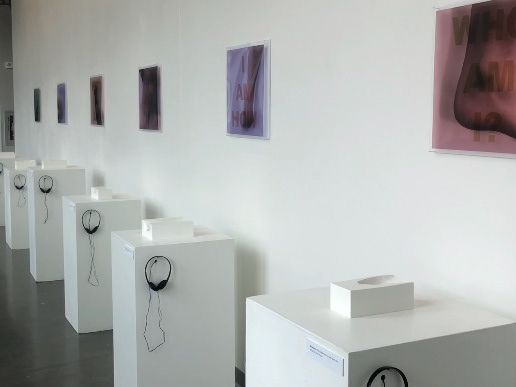WHAT DID WE MAKE?
For our Senior Capstone Project to conclude our B.S. in Technology Arts & Media at University of Colorado Boulder, Nate Bennett and I created Flow Room.
Flow Room is an immersive, calming space on CU campus. To design Flow Room, we incorporated nature-inspired features based on research that suggests elements from nature have a relaxing effect on people. We decided to transform the space into five different natural environments by incorporating colors, sounds, and projected fractal patterns into the room’s ambience. People can explore and choose an environment based on what they find most relaxing. We designed Flow Room as an individual experience, to create a space where someone could escape all of the chatter of daily life, whether it is coming from technology, work, school, or other people. Once a person enters the room, they can relax, meditate, find space to breathe, or whatever else their mind and body needs.
For a full process documentation, visit our project blog.
PURPOSE
Using the magic of physical computing and nature-based sensory experiences, Flow Room provides a space on the CU Boulder campus to center yourself and find a sense of calm. Stay for as long as you like — there’s no wrong way to explore it.
FUNCTIONALITY
Flow Room is made up of four main components: (1) the phone slot, (2) the control panel, (3) dynamic Neopixels and sound (4) the projected visualizations, and (5) the room design itself.
PHONE SLOT
The phone slot starts the whole experience. We placed it at the front of the room to make it clear to the user what to do first, as it is the first element they'll encounter upon entering the room. When a user places their phone in the slot they are making an intentional choice to be fully present for themselves in the Flow Room for as long as they choose. (However, their phone is still visible and accessible to reduce possible anxiety of fully "loosing" their phone).
We constructed both the pedestal and the slot out of wood, drywall, and paint. A switch inside the phone slot needs to be actuated in order for the rest of the room to be active. The switch status is indicated with Neopixels, shown through acrylic.




CONTROL PANEL
We created a tangible interface to allow the user to control the environment of the room. The five environments include: rainstorm, deep ocean, rainforest, beach, and desert. To change the environment, the user simply places a stone in the middle of the panel. The stones use RFID tags to signal which environment should be current.
Since our entire room operates with technology, but we want users to be able to take some space from technology, we wanted our interface to feel more organic and less computerized. Another priority for us was to make sure the shifts between environments felt transformational enough so users could deeply feel what their preferences were.
NEOPIXELS & SOUND
We had Neopixels mounted around the top perimeter of the room, which changed colors based on the environment selected. These strands remained static but provided the main color shift. Along the bottom of the room were more dynamically programmed Neopixels that provided more life to each of the environments.
The sound element of Flow Room was composed of nature-scapes from each of the environments layered over singing meditation bowls. The bowls stay consistent throughout the experience but the nature-scapes fade in and out as the user makes environment changes.





PROJECTED VISUALIZATIONS
To make this 5 minute animation, we used p5.js (a JavaScript library for creative programmed visuals). We used a lot of math to make the different visual elements layer, recurse, and support each other well, which took a lot of iterations and a lot of user testing. Thankfully, there is ample p5.js documentation online to help guide us in learning how to make this. Our biggest challenge was to write an animation that could adapt real time to user input (for the color changes) but also be visually mesmerizing enough to keep them engaged.
ROOM CONSTRUCTION
We changed the shape of the room using wire, and then could mount our crinkled wallpaper to create the textured feel. The paper worked very well to diffuse the light from the Neopixels, and was also a nice material to project onto.



